Lewis, Montana’s Favorite Llama

The young TV reporter sets up her camera tripod in our yard as the snow whirls just in time for Christmas Eve. The neighbor kids, dressed in colorful winter garb, shuffle their feet in expectation. The star of the show stands next to me, tall and handsome with a red scarf around his white neck and a pack filled with Christmas gifts on his back. Here we are, at the end of our long adventure and the beginning of a new one. “Smile, my friend,” I say to Lewis. “You made it. You are famous now.”
When I saw him for the first time, sitting by the lake bathed in a spill of sunlight on an otherwise cloudy day in late October 2018, I felt hopeful that his story might have a happy ending. Pointing the binoculars again at the object in question about a mile away on the far shore of Lewis Lake, it had morphed, beyond any doubt, into a white llama. There he was, looking like he belonged here in the wilds of Yellowstone National Park. But he didn’t.
This was how our adventure began. After a false start, trying to make our way along the boggy shore, we finally found a hiking trail leading in the right direction and were on our way to rescue a llama that had been running free in the park for the last three months.
Ike the llama, camped with a commercial tour group at Heart Lake back in July, had disappeared into the night, leaving his halter and lead behind. The reason, it was surmised, was a painful wound on his cheek that his halter had rubbed on. A few attempts to capture him over the following weeks were thwarted by Ike’s daring evasive maneuvers and his stubborn refusal to be caught and put back into bondage. Soon, efforts by both the outfitter and the Park Service were discontinued and the llama abandoned to fend for himself. Park visitors reported spotting Ike along roads and hiking trails throughout the summer and backpackers and motorists posted his photos on social media.
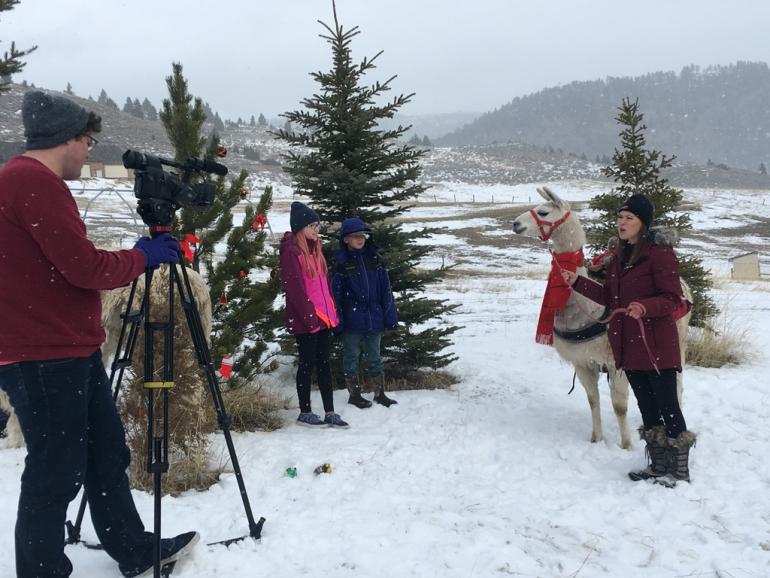

It was no coincidence that my own twenty-plus years’ experience living and packing with and,yes, rescuing these intelligent and charming creatures finally led me on the path to Ike. Being a domestic herd animal, Ike had slim chances of surviving the winter in Yellowstone. Though sufficiently adapted to the harsh climes of the Andes mountains, llamas did not evolve to cope with snow many feet deep; neither are they meant to wander alone through wolf country. After finishing my own llama packing season and hearing about this sad situation, I assembled a small rescue crew of four humans and three llamas and drove down to Lewis Lake, Ike’s last known location. I believed I had a good chance of convincing him to come home with us.
With the three llamas in tow, we hiked through the woods for about a mile without seeing him.Then, suddenly, he came running, a flash of white and tan. Ike had spotted the llamas. I could feel his confidence and excitement as he approached. This guy was no fool. The wound on his cheek leaking pus was apparent. I stuck to my resolve not to touch him or otherwise infringe on his space. That had obviously backfired before. He was overjoyed to see the llamas but stared at us humans and I could see his mind working.
In the end, he made a decision. He would trust us. As I turned my string of llamas back toward the trail, he followed. Free and unattached, like he wanted, he took his place in the pack string behind the third llama. Ike marched with us back down the path to the trailer, where he jumped in, together with his new buddies. It was done.


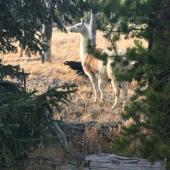
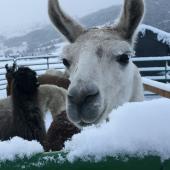
Safely at home in Montana, Ike was renamed “Lewis” after our fateful meeting at the lake. This marked the beginning of a new chapter in his life and letting go of the old for good. He integrated himself with grace into his new herd. However, the cause of the pain in his mouth had to be explored and was finally diagnosed as advanced periodontal disease with a fractured molar in the far back. An untreated abscess had eroded part of the jaw bone and created an outlet for infected pus. It was, of course, imperative to treat the disease to prevent its spread to other teeth and, eventually, poisoning his organs.
Watching Lewis for a few months behaving like a normal, happy animal reminded me how stoic llamas are and how well herd animals hide their injuries and shortcomings from the world. This way the affected individuals not only hide their injury from predators to save themselves but they also protect their herd. Lewis was no exception. But I knew. Based on my vet’s explanations, there was no doubt that Lewis was in serious pain.

I also learned that the complicated surgery could not be done by my vet. The procedure involved what’s called an extraoral approach. Because llamas have long mouths, it is impossible to reach and extract a molar in the very back and effectively clean up all the infected tissue orally, like in humans. Therefore, the extraoral method is preferred whereby the surgeon cuts through the cheek and into the jawbone from the outside, pushes the tooth up and out of the jaw and cleans out all junk. This procedure is done in an operating room setting with a surgical team including an anesthesiologist. Of course, it also comes with a substantial price tag.
Our packing business, Yellowstone Llamas, presently supports fifteen llamas with feed, equipment and regular vet care. This new situation challenged our budget and I agonized what to do and how to do it. The recommendation was to have Lewis treated at the Colorado State University Veterinary Teaching Hospital in Fort Collins (CSU VTH). I knew the head of Livestock Medicine & Surgery Service and Chief of Staff, Dr. Robert Callan, and felt confident that Lewis would be in the best hands possible there. But how to come up with the funds for the surgery as well as travel and hotel costs for me? The events that followed are hard to describe without using clichés such as “unbelievable” and “heartwarming.” But that is exactly how it felt.

It was July of 2019 and I decided to try GoFundMe. I wrote Lewis’s story on their site, posted it on Facebook and timidly emailed a few friends for help, hoping for the best. What happened next was a snowball effect of compassion and generosity that gathered speed and attention beyond my most hopeful dreams. The news of Lewis’s rescue in the fall of 2018 had been covered by a number of papers, locally and nationally. It was gratifying. This time, a Bozeman TV station reported our story and GoFundMe appeal and off we went on a wild ride. The response by the public, locally, nationwide, and even internationally to our GoFundMe campaign took us by surprise and sent Lewis and me with sufficient funds on our trip to Fort Collins, where the media was waiting to cover our adventurous story and Lewis’s upcoming surgery for the Denver area viewers. Lewis’s graceful camera presence in front of the hospital charmed more caring folks into making donations and soon he went into surgery under the gifted hands of Dr. Jennifer Rawlinson, DVM, professor of oral surgery and his newest fan.


Lewis’s surgery lasted longer than expected. Dr. Jennie extracted three infected teeth, two on the right and one on the left. I sat in the waiting room with the reporters of the greater Denver area, all of us waiting for news together. It was an incredible feeling to be surrounded by the warmth of strangers who cared about a charming camelid called Lewis. They and the over 100 generous donors wanted to be part of this story of compassion and help rid a suffering animal of his pain. I have never felt more grateful.
Lewis took it all in stride, as if he had known all along the course his fate would take.His surgery was a success and the prognosis for his full recovery is excellent. Since his return home to Montana in September, Rachel, our loyal Bozeman reporter, has returned repeatedly to update her viewers on Lewis’s progress.
The camera rolls. Rachel grabs the microphone. The kids stop squirming. “Today, on Christmas Eve, we are in Livingston with Lewis, Montana’s favorite llama,” she announces.
And Lewis smiles as only a llama can.



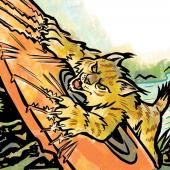

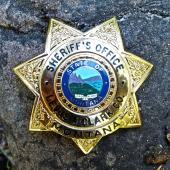



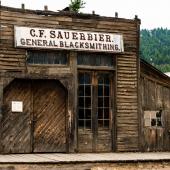


Leave a Comment Here